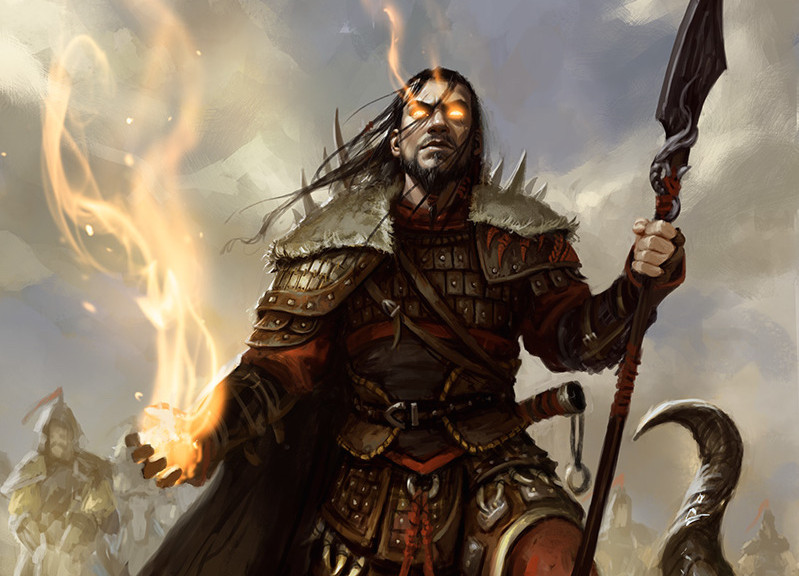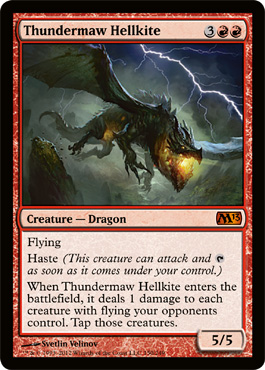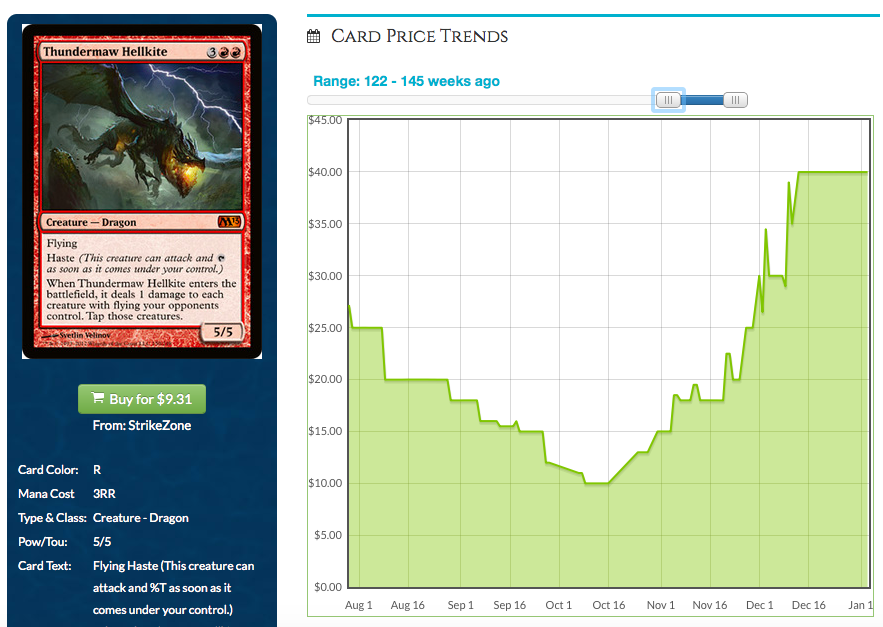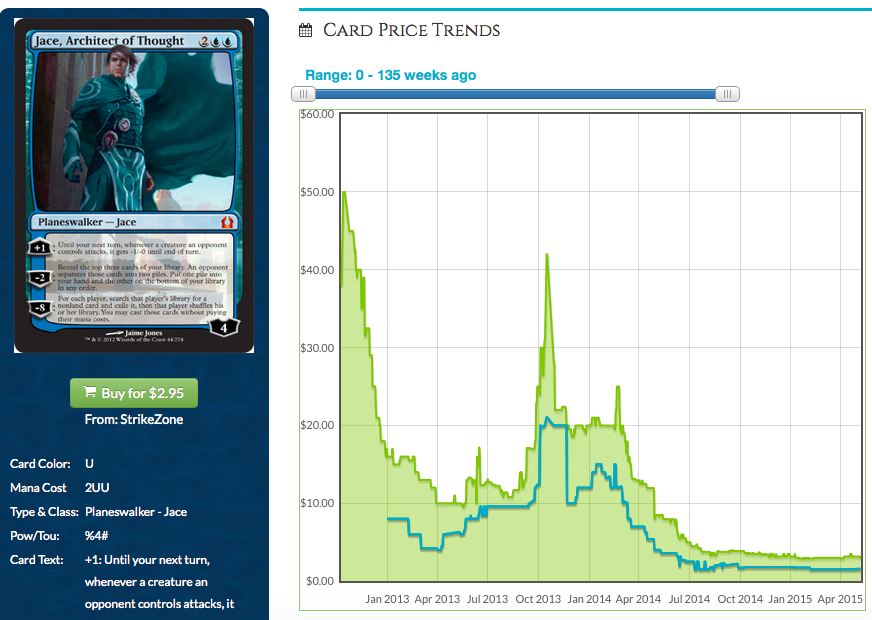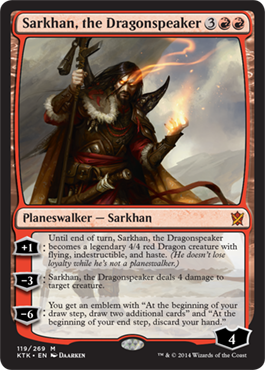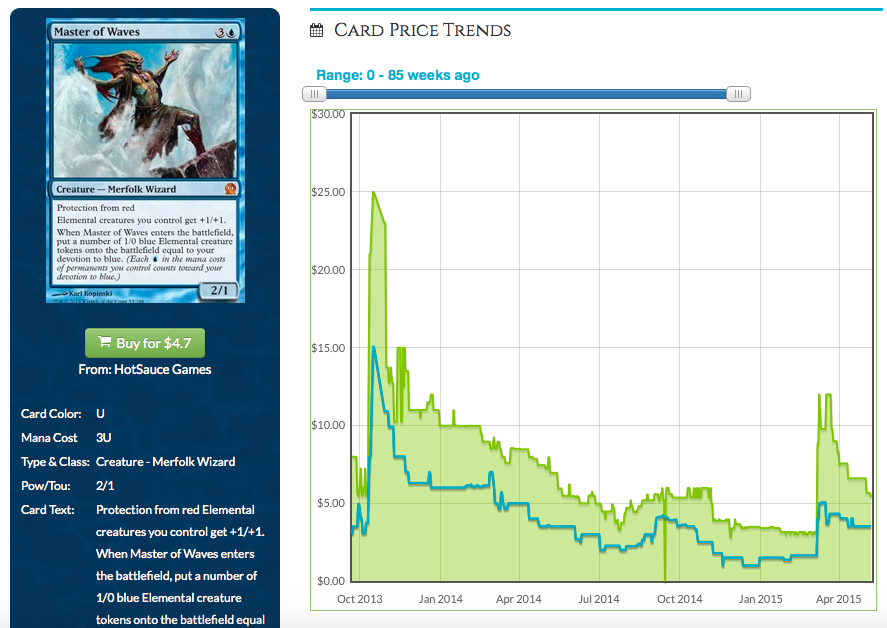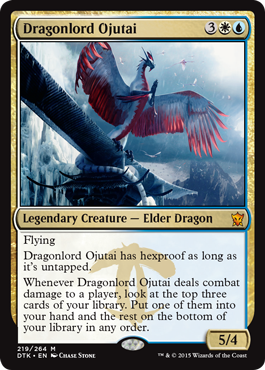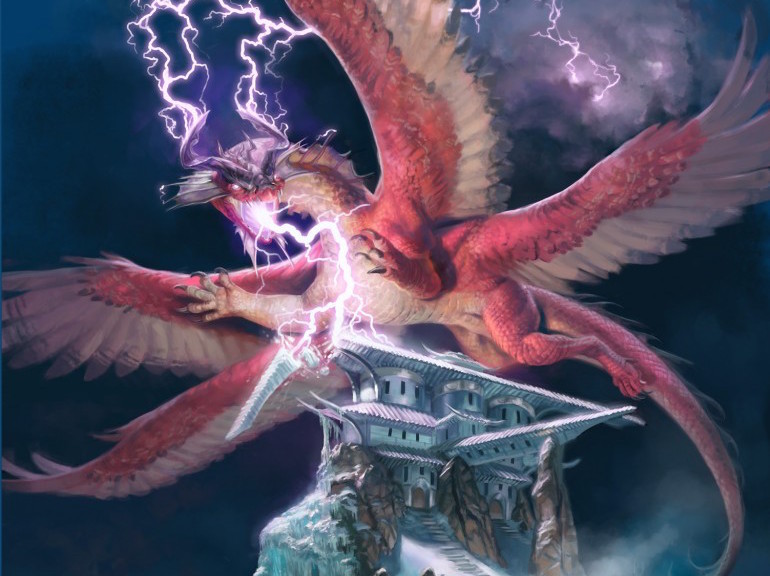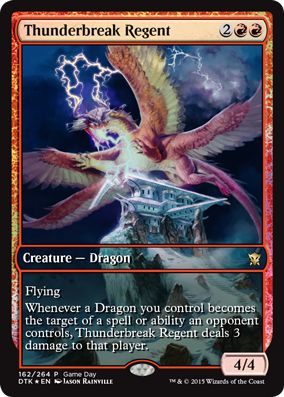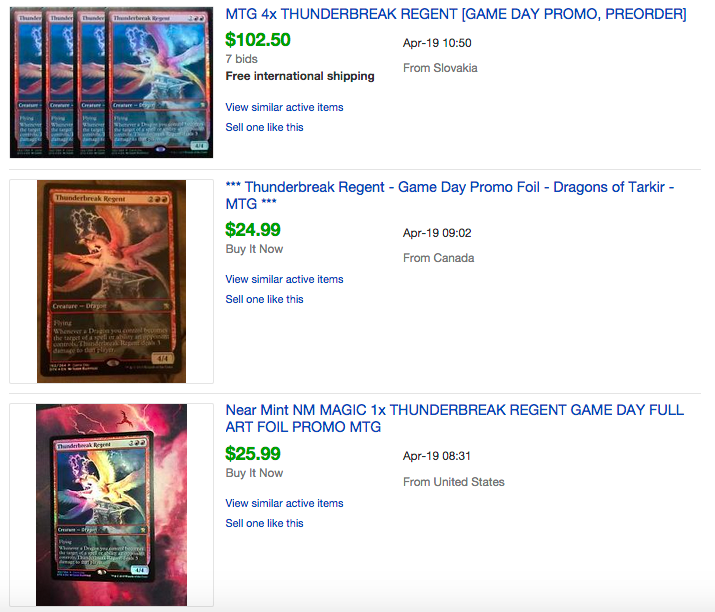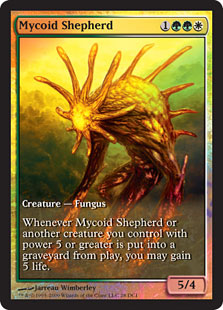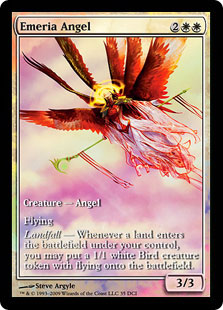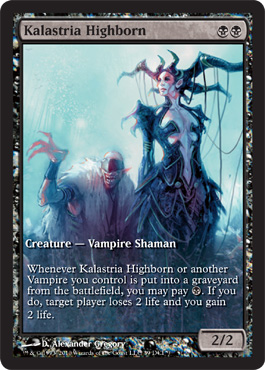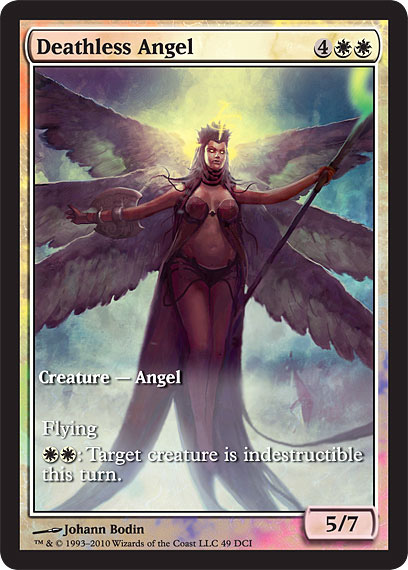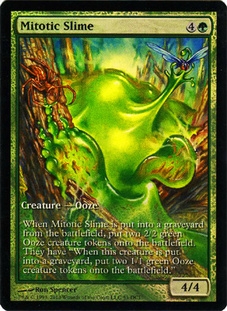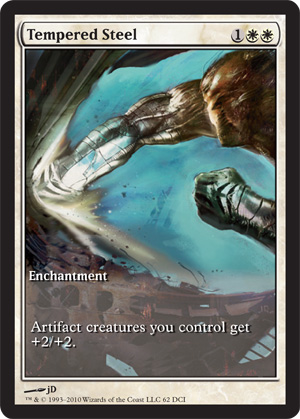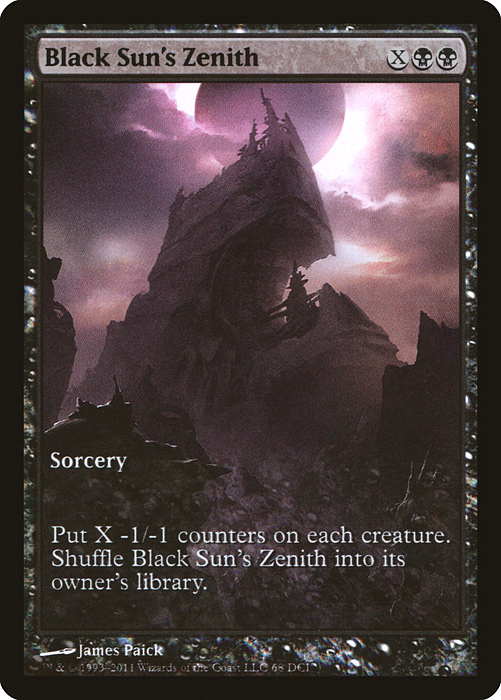By Guo Heng
Mark Rosewater did an AMA on Reddit a few years back, and the following was part of his response to a question by Hall of Famer Brian ‘Dragonmaster’ Kibler regarding the “lack of truly awesome dragons in a long time”:
“…I am happy to tell you that there is a dragon that I’ve been told is very tournament worthy in the pipeline. I can’t tell you for what set but suffice to say it’s been made and you all will have a chance to play it soon enough.”
-Mark Rosewater
Sure enough, in Mark Rosewater’s preview piece for Magic 2013, we got this:
Thundermaw Hellkite was the dragon that redefined the competitive dragon. The ambition behind the design of Thundermaw Hellkite was to create “a Dragon that set the standard for a badass Dragon“ as Doug Beyer laid it out in Mark’s preview article. And Thundermaw Hellkite achieved exactly that. Prior to Thundermaw Hellkite’s existence, the dragons that saw high-level competitive play were either too expensive to cast or contain a prohibitive mana requirement that restricted their playability to few archetypes.
Thundermaw Hellkite broke the mold. She is a five casting cost 5/5 flier with haste and an enter the battlefield ability that ensures she and potentially your army could go in for the alpha strike. She was obviously pushed and was designed for the tournament tables.
Yet her price trajectory during her first few months of being unleashed into the meta was nothing but dismal.
After the hype surrounding Magic 2013 died down, Thundermaw Hellkite’s price tanked all the way to $10. How could the price of such a playable mythic stoop so low? We all know the answer to that: Thundermaw Hellkite was a mythic with no home in Standard. Indeed the reason Thundermaw maintained a price tag of $10 was the fact that she is a dragon and is from a core set.
In October 2012, a couple of months after Thundermaw Hellkite’s release, and right after Return to Ravnica rotated in, Takeda Harunobu won a high profile Standard tournament in Japan with a Standard brew we now know as Jeskai Tempo (or UWR Tempo back then). Takeda’s deck featured two Thundermaw Hellkites alongside Geist of Saint Traft and Restoration Angel.
In the middle of November 2012, Jon Bolding took down Grand Prix Charleston with a Black-Red ‘Big’ Zombies deck that featured three Hellkites in the mainboard. Tyler Lytle took down Grand Prix San Antonio the week after with the same deck.
By December 2012, Thundermaw Hellkite was a $40 card and remained so until February 2013. Throughout her Standard shelf life, Thundermaw Hellkite saw play in a multitude of archetypes and was a quintessential staple of Innistrad – Return to Ravnica Standard. She even saw Modern play when the UWR Tempo archetype made its debut in Modern.
Thundermaw Hellkite’s trend was not unique to herself of course. A handful of expensive mythics had at some point during their Standard life been sorely undervalued due to a multitude of reasons. Some stayed low for a brief period of time. Dragonlord Ojutai is a recent example. He was preordering for $6, began his first week in Standard under $10 and is $38 as of writing. Some remained low much longer. Remember the summer when Jace, Architect of Thought was under $10?
On the other hand, a lot of mythics stayed in the under $10 region all the way until they rotated out of Standard and into the bulk bin. I was bullish on Duskmantle Seer after a BUG Aggro shell running four Duskmantle Seers briefly surfaced in the meta. Even Paulo Vitor Damo da Rosa had good things to say about the Seer, arguing that his symmetrical ability is asymmetrical in the right deck. When Duskmantle Seer hit $3, I thought he was too cheap. I bought two playsets for speculation and one foil playset for myself. As of today, they are collecting metaphorical dust in my bulk specs box.
When we speculate on undervalued playable mythics, we are betting that those mythics would have their day in the sun before their time in Standard comes to a dawn. The following are three questions I use to evaluate the chances that an under $10 mythic would spike before its time in Standard comes to an end.
1. A Mythic in a Hostile Meta?
Thundermaw Hellkite struggled to find a home during her first few months in Standard as it was the era of Blue-White Delver. If you were lucky enough to be able to resolve a five casting cost dragon amid Mana Leak and Snapcaster Mage, Vapor Snag would wreck your tempo. Once Mana Leak and Vapor Snag rotated out, the meta was Thundermaw Hellkite friendly and as a result she was able to spread her wings and soar to $40.
Thundermaw Hellkite’s dominance (in tandem with that of Falkenrath Aristocrat) kept Jace, Architect of Thought out of the metagame.
Once the hasty fliers rotated out of Standard in October 2013, Jace proliferated throughout the metagame in Blue-based control decks and Mono Blue Devotion. His price spiked to the $30s briefly and hovered around the $20s until the release of Jace vs. Vraska.
Xenagos, the Reveler and Ashiok, Nightmare Weaver both spent time as $7 mythics. Both spiked above $15 when a new Standard was ushered in last fall.
Are there any inherently good mythics that are currently undervalued because they do not have a home in the metagame? Sarkhan, the Dragonspeaker is just $7.55 at the moment. Sarkhan is competitively costed, defends himself and is a game finisher but he is not the card you want to cast in a metagame where Hero’s Downfall is prevalent. Could Sarkhan soar to $20 once Hero’s Downfall falls out of Standard?
Sarkhan, the Dragonspeaker smells like a good summer pick-up.
2. Does the Mythic Carry the Game by Itself?
A card that requires synergy to tap into its full potential is unlikely to be played in multiple archetypes. Build-around-me mythics have a significantly lower chance of spiking due to the reduced probability of them finding a home. Duskmantle Seer was a good example. He requires you to maintain a low curve in your deck to optimally exploit his Dark Confidant ability.
The reliance on synergy was the reason I did not buy in on the Master of Waves spike when Shorecrasher Elemental was spoiled.
It was tempting to buy into cheap Master of Waves in case Blue Devotion becomes a thing again, but too much hinged on the success of a single deck for that bet to be worth making.
Every card listed on point one above are good cards even by themselves. Dragonlord Ojutai is a card advantage machine all by himself, allowing him to be one of the most ubiquitous mythic in the current Standard metagame. Of course we get a card that occasionally bucks the trend. Falkenrath Aristocrat’s spike hinged solely on the popularity of The Aristocrats archetype but she was an exception rather than the norm.
3. Does the Mythic have a Snowball Effect?
The card advantage you get from each activation of Jace, Architect of Thought or each time Dragonlord Ojutai connects makes it more likely for you to activate or connect the second time around. And the third. Eventually the card advantage from those effects propel you sufficiently far ahead in the game that your opponent has practically lost even though his or her life point is still above zero.
An undervalued mythic with a snowball effect is more likely to find a home and experience a price spike compared with a mythic that offers you a splashy, one-off effect. Incremental card advantage and board position win games. Sometimes the advantage those cards generate are not immediately obvious until you play with them.
I am going to cheat and use a couple of Standard rares to illustrate this point. In my defense, the following are rares that started out their Standard lives being in the low single digit price range and eventually maintained a price above $15 for the majority of their Standard-legal life. Without playtesting with Goblin Rabblemaster, it was easy to overlook the fact that every turn Goblin Rabblemaster stayed on board puts you further and further ahead in board position. Every turn Courser of Kruphix remained unanswered could potentially lead to an extra card drawn and an extra life point gained.
This question generally applies to permanents rather than spells. We do occasionally get a spell that allows us to chain card advantage. The first Sphinx’s Revelation you resolve increases your odds of hitting your second.
In this vein, I like Sorin, Solemn Visitor as a pick right now and during this summer. Sorin is currently paying a visit to the valley of sub-$10 playable mythics. $9.40 seems too cheap for a versatile planeswalker that generates incremental card advantage and could be found in both Abzan Aggro and Abzan Control. Perhaps the latest iteration of Mardu Superfriends could be the next tier one contender in the format. Or we could even see Sorin and Narset side-by-side in Esper Control in the new Standard meta this October (I personally prefer Dragonlords). Sorin also has the additional upside of a relatively low spread of 36% as of writing.
Conclusion
Those three questions cover only the main points in evaluating if a sub-$10 mythic has a good chance of spiking before it rotates. Other factors like Duel Deck reprint risk and set supply should be taken into consideration as well. I chose those three elements because they constitute a useful rule of thumb to help you decide if a cheap mythic is worth picking up. Those points were derived from the lessons I’ve learned from getting burned by Duskmantle Seer and the countless other mythics I spec’d on with hopes of an early retirement but are now destined to remain in my bulk spec box forever. Those points were distilled from the what little success I’ve had with Thundermaw Hellkite and a few other mythics which in retrospect seemed exceedingly obvious they were too cheap. Those were the points I used to evaluate Dragonlord Ojutai before coming to a conclusion that I should probably preorder him.
Do share your thoughts in the comments section below, or catch me on Twitter at @theguoheng.
